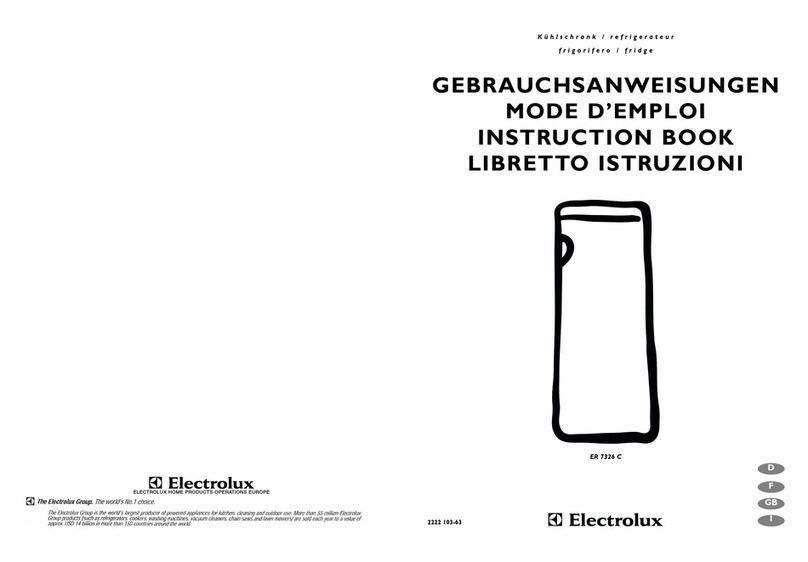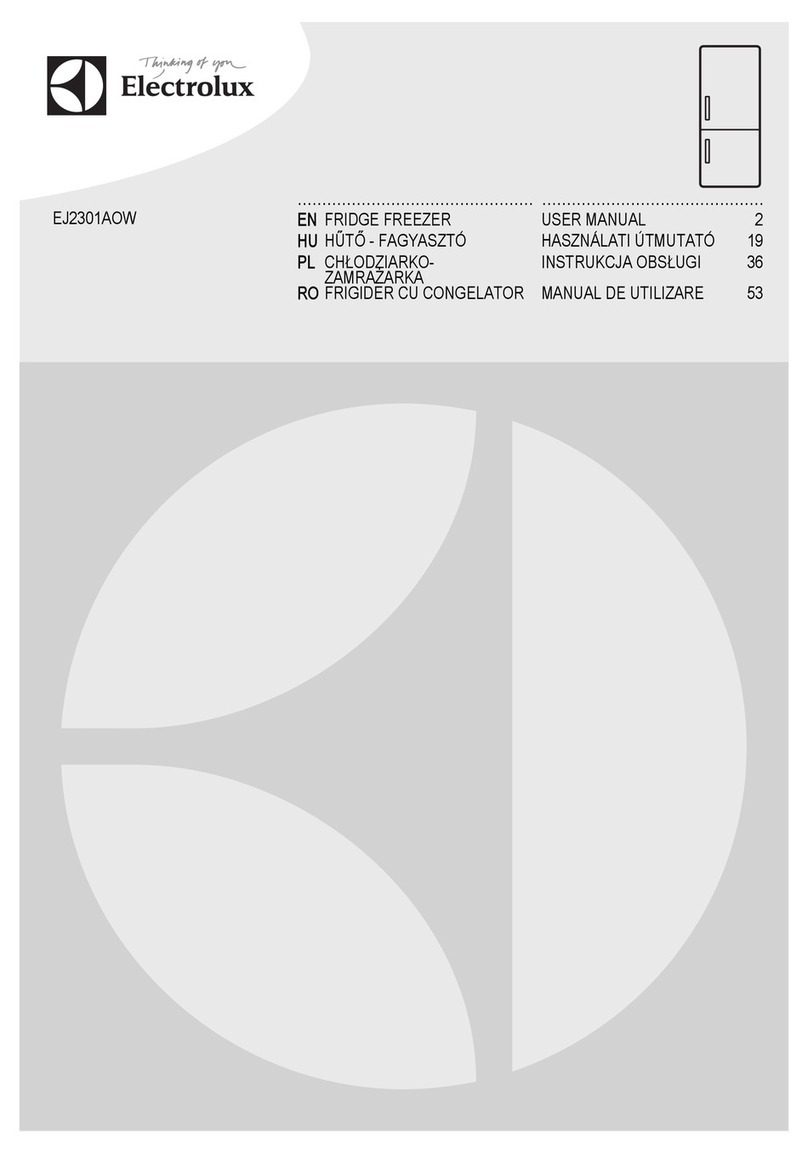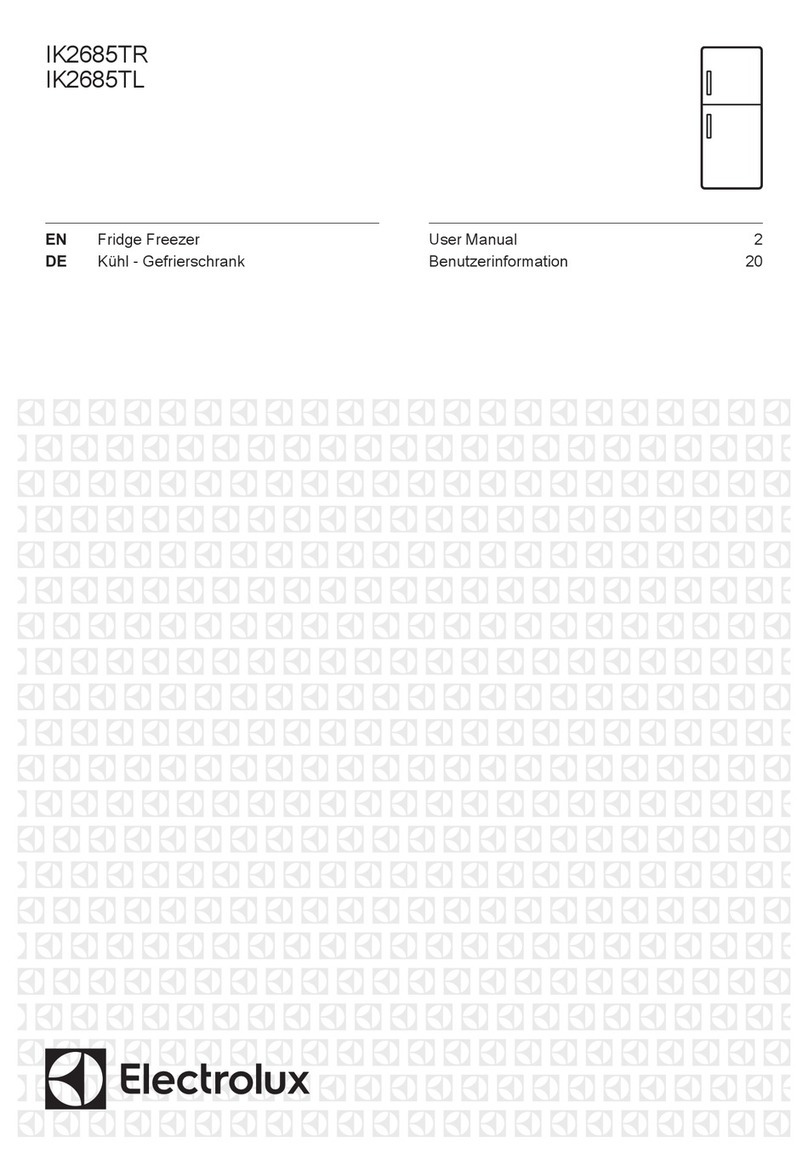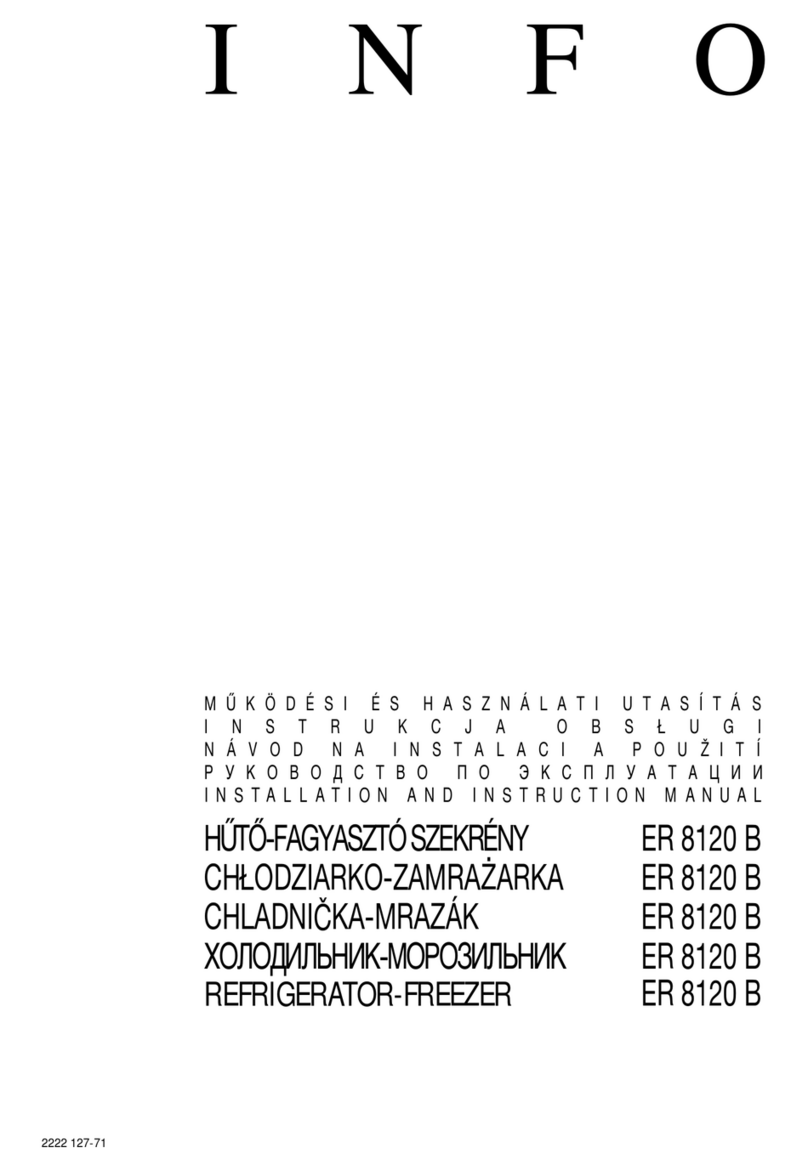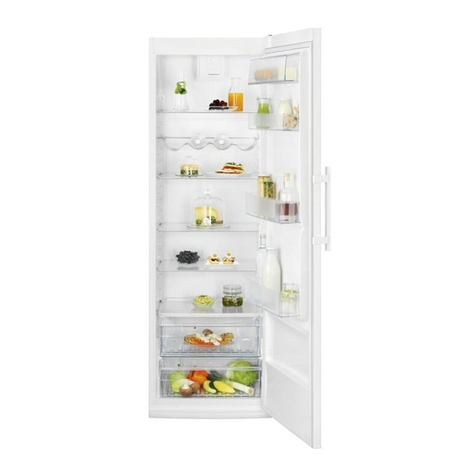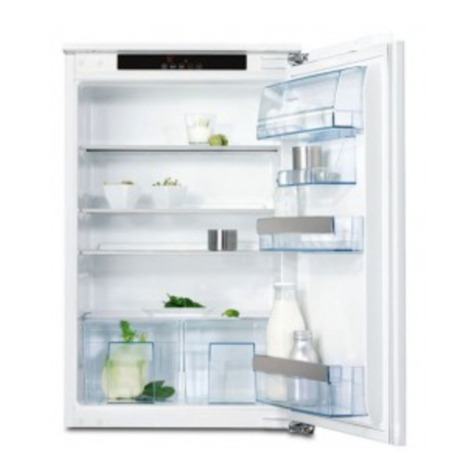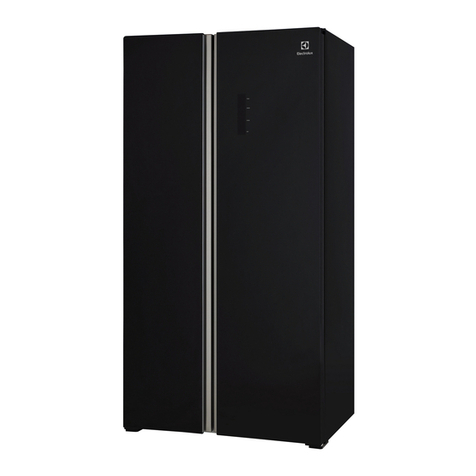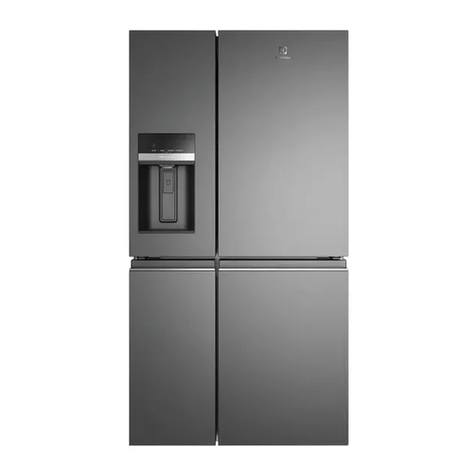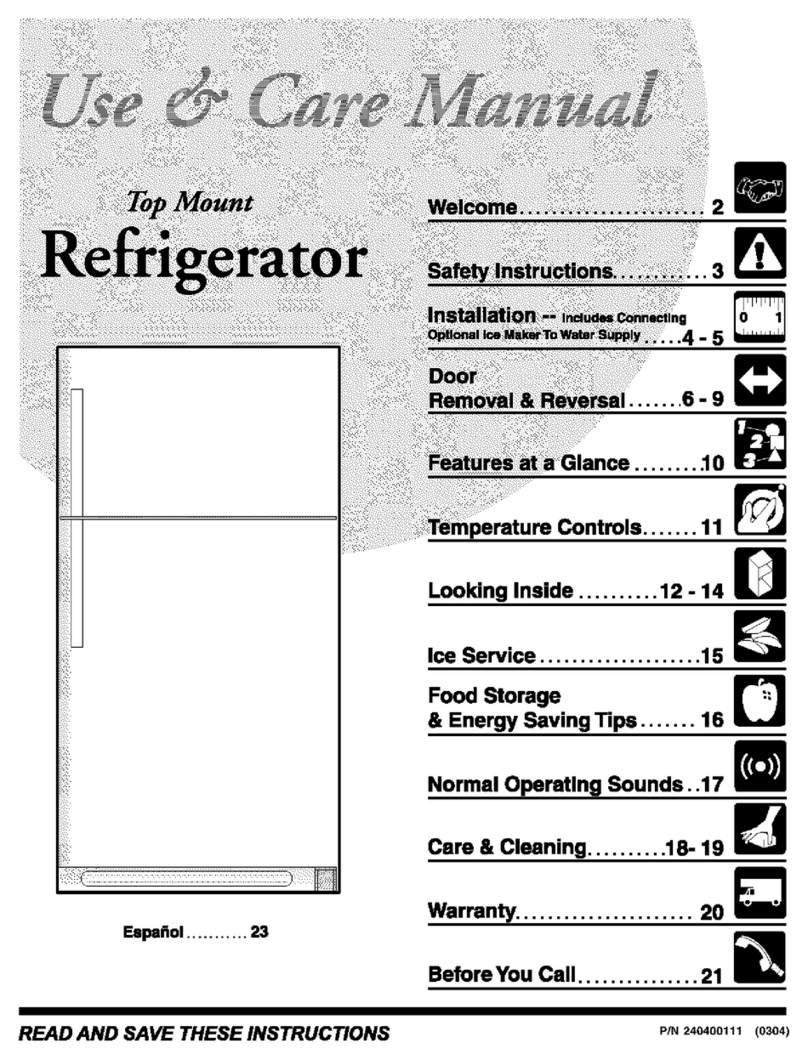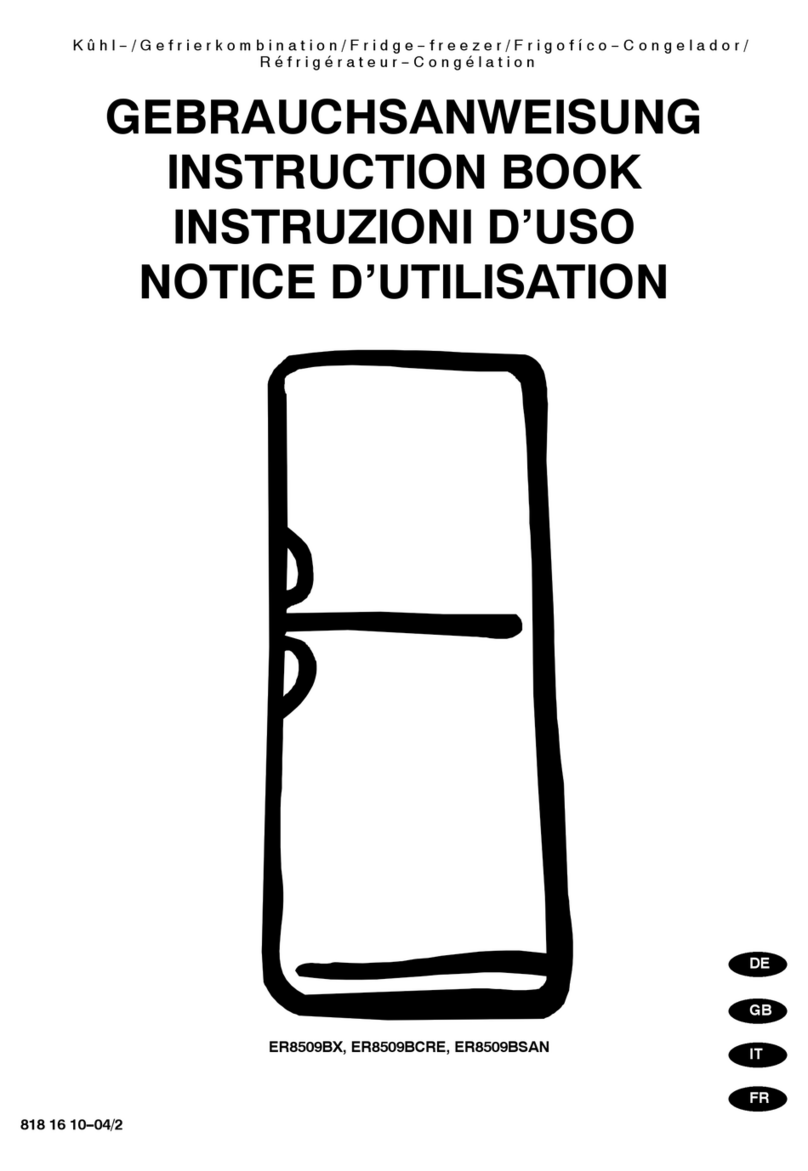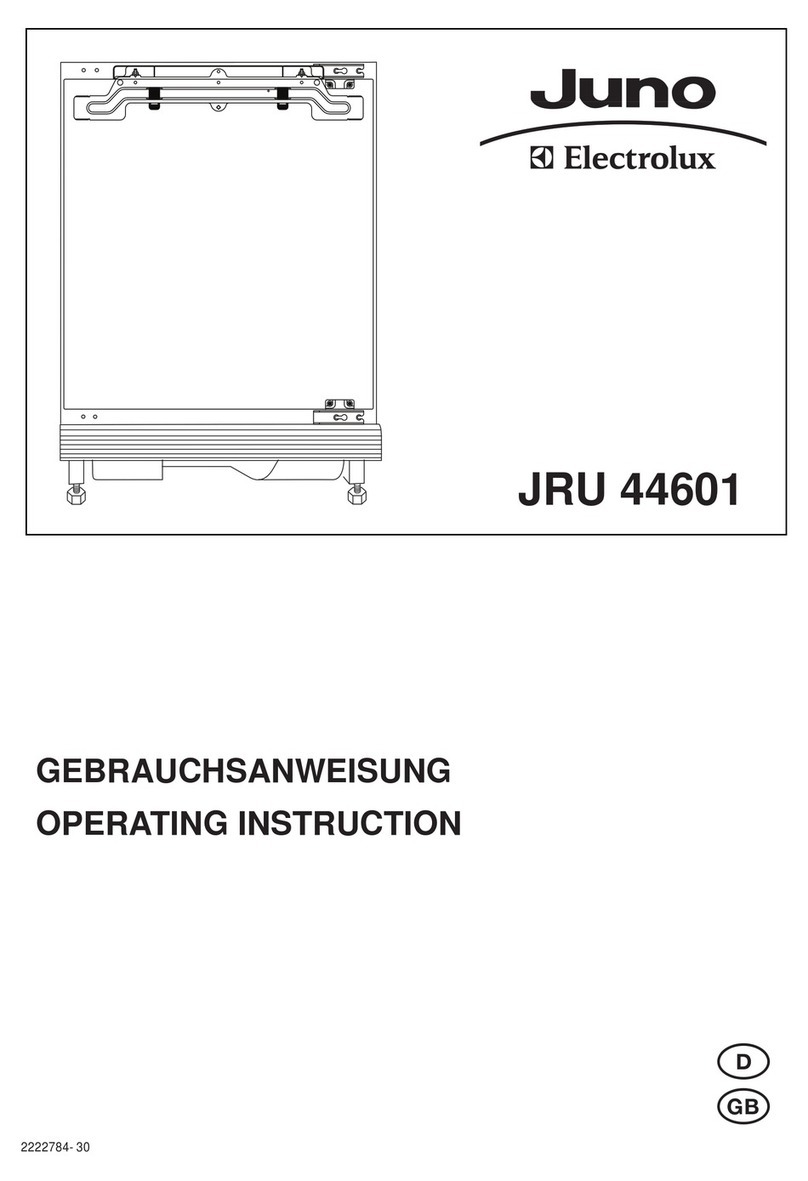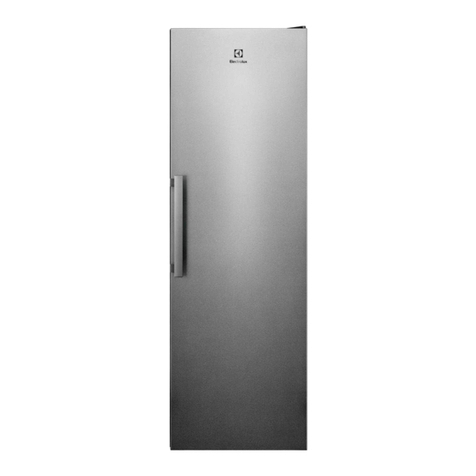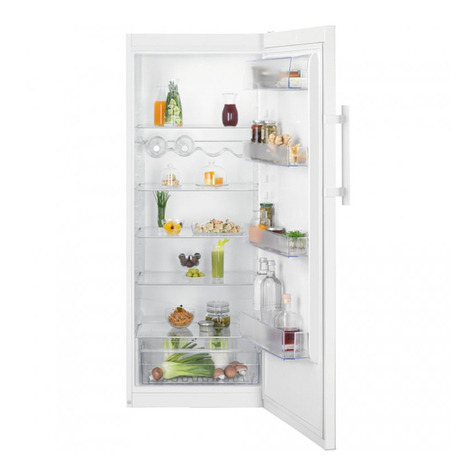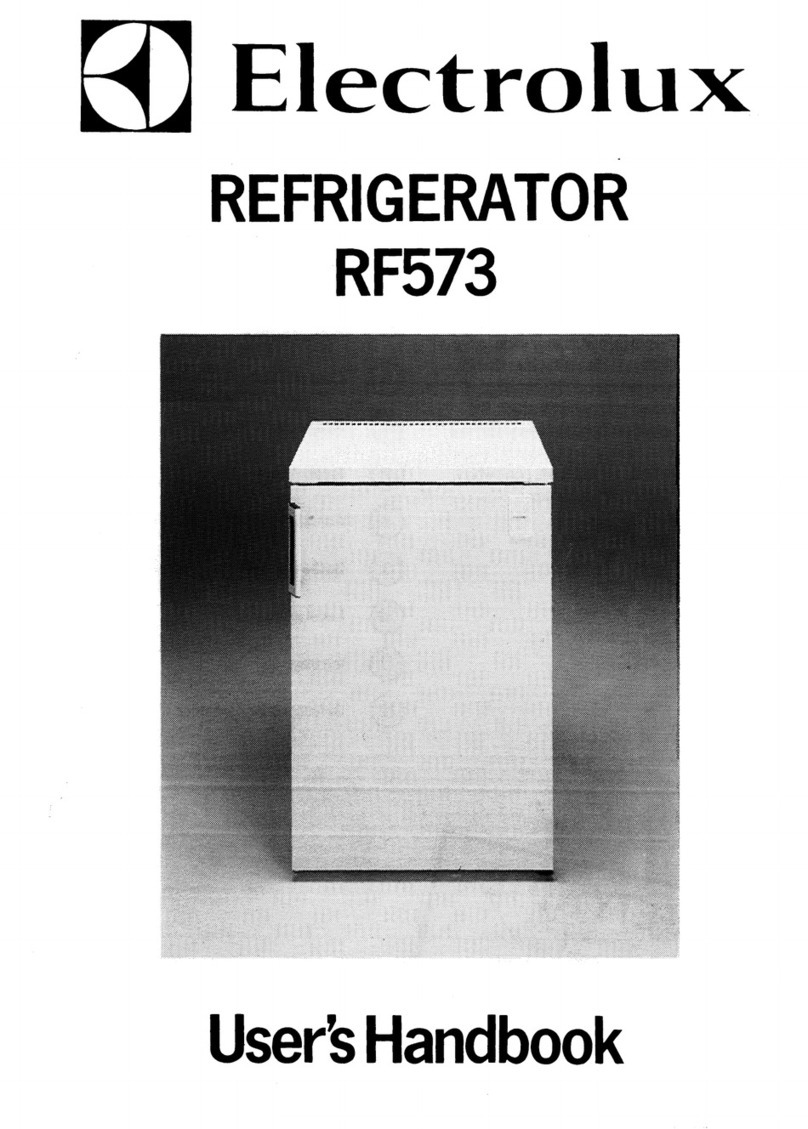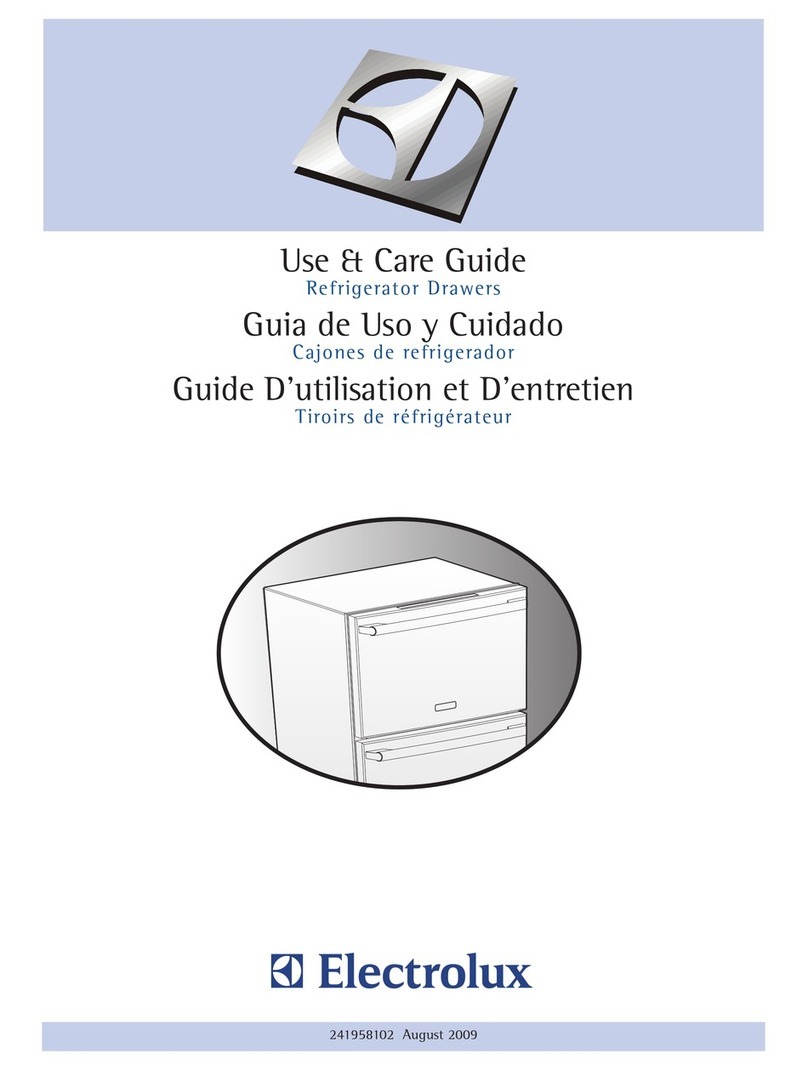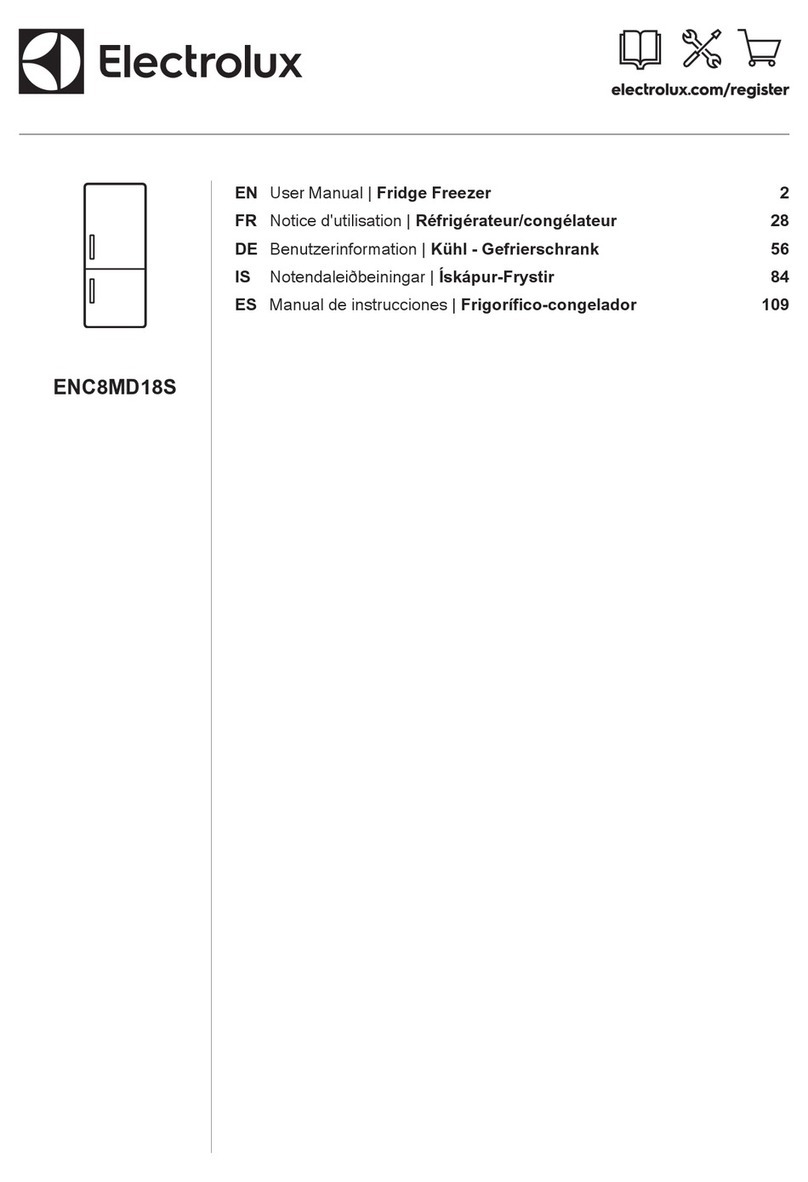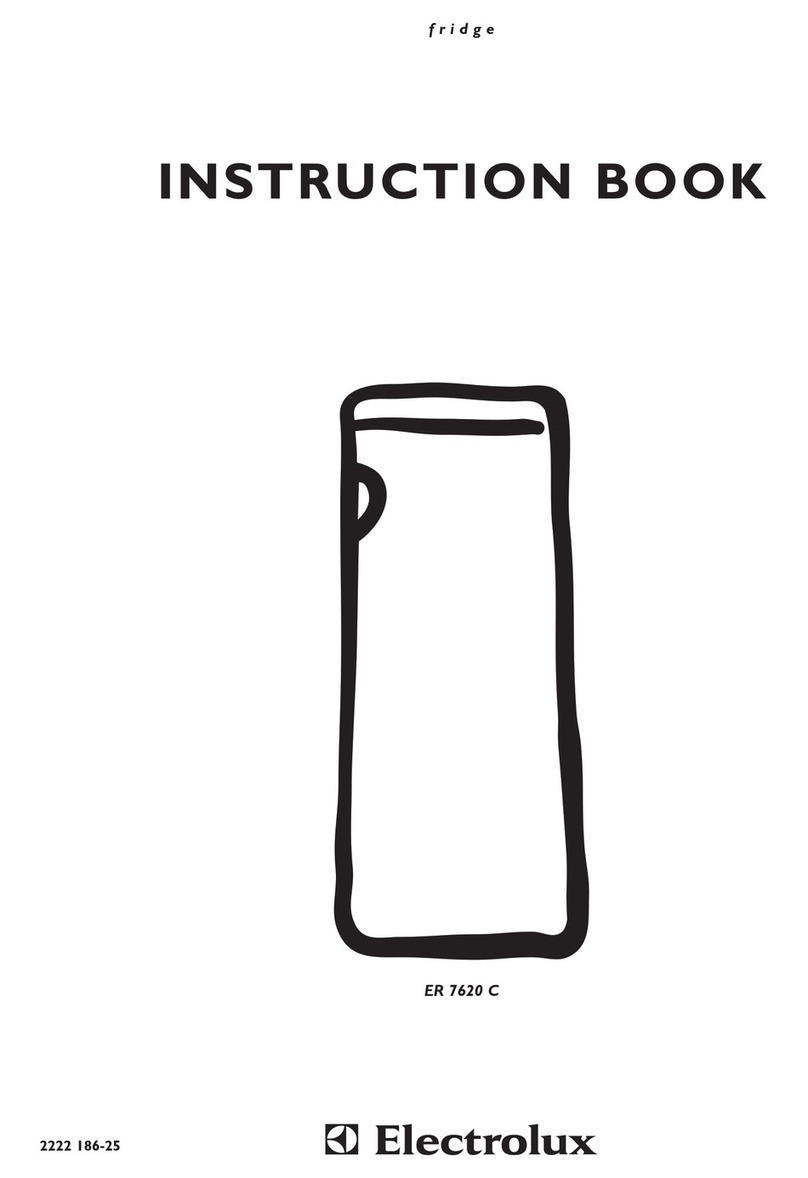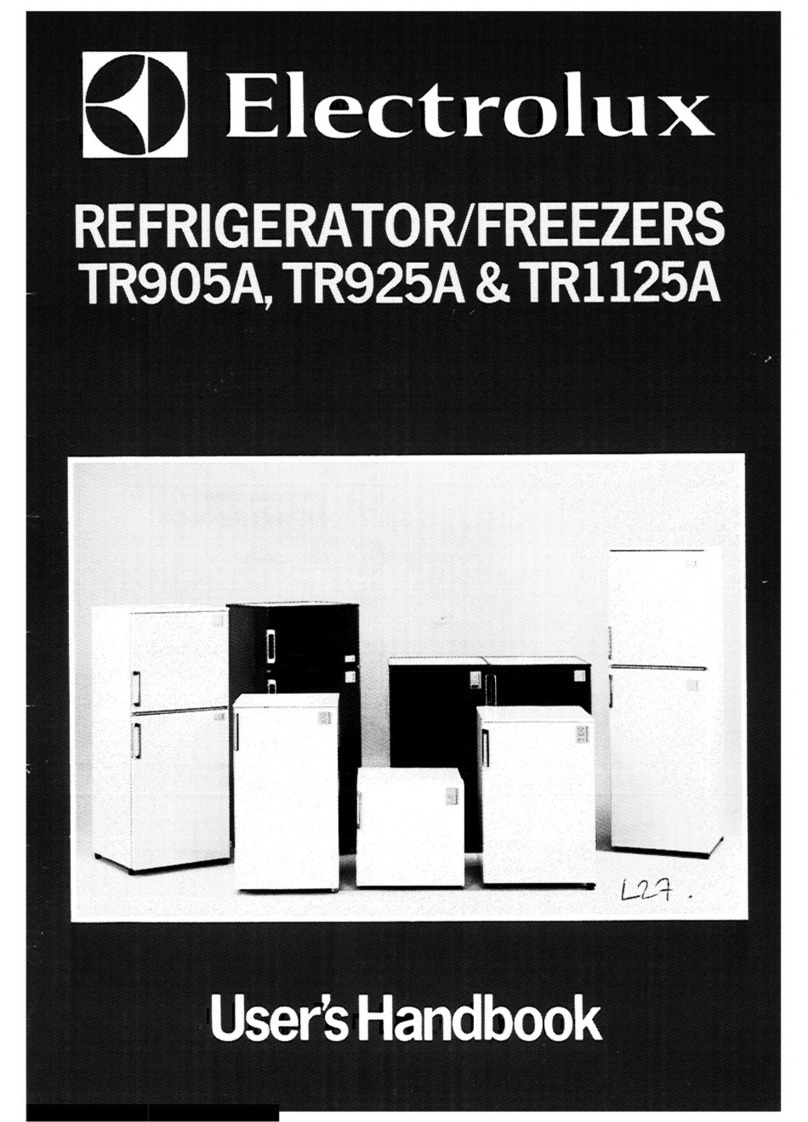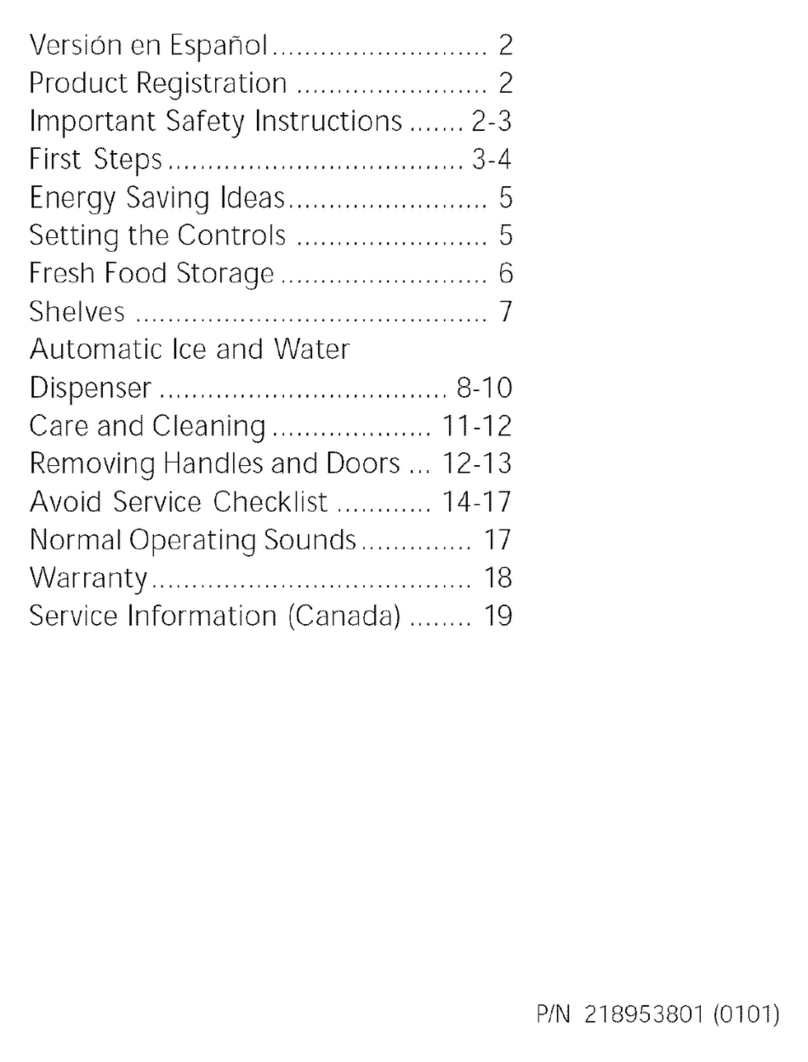2CONTENTS
Important safety instructions
..............................................................
3
Refrigerator Features
Top mount refrigerator features
................................................
4
Bottom mount refrigerator features
.........................................
7
French door with ice & water features
....................................
9
Installing your new refrigerator
Unpacking your refrigerator
.......................................................
10
Locating your refrigerator
...........................................................
10
Installing your refrigerator
............................................................
10
Fitting the handles
..............................................................................
11
Using your refrigerator
Removing Features
............................................................................
12
Crisper Bin
..............................................................................................
12
SpillSafe™ glass shelves
.................................................................
12
Freezer Shelves
...................................................................................
12
Drawers with telescopic slides
....................................................
12
Twist & Serve ice
.................................................................................
13
LED Lighting
..........................................................................................
13
Temperature control
.........................................................................
13
About the User Interface
ETB4602 & ETB5702 models
.......................................................
14
ETE4600, ETE5720, EBE4500 & EBE5300 models
.............
15
EHE5220 models
..................................................................................
16
General information
Error Codes
...........................................................................................
18
Cleaning the refrigerator
...............................................................
19
Food storage guide
........................................................................
20
Troubleshooting
..................................................................................
21
Ice maker troubleshooting
...........................................................
23
CONTENTS
CONGRATULATIONS
Dear customer,
Congratulations and thank you for choosing our refrigerator.
We are sure you will find your new refrigerator a pleasure
to use. Before you use the refrigerator we recommend that
you read through the relevant sections of this manual, which
provides a description of your refrigerator and its functions.
To avoid the risks that are always present when you use
an electric appliance, itisimportant that the refrigerator is
installed correctly and that you read the safetyinstructions
carefully to avoid misuse and hazards.
We recommend that you keep thisinstructionbooklet
for future reference and pass it on to any future owners.
After unpacking the refrigerator, please check itisnot
damaged. Ifin doubt, do not use the refrigerator but contact
your local customer care centre.
The symbols you will see in this booklet have these meanings:
WARNING
This symbol indicates information concerning your
personal safety.
CAUTION
This symbol indicates information on how to avoid damaging
the refrigerator
IMPORTANT
This symbol indicates tips and information aboutuse
of the refrigerator
ENVIRONMENT
This symbol indicates tips and information abouteconomical
and ecological use of the refrigerator
Conditions of use
This refrigerator is designed andintended to be used in
normal domestic applications only.
Record model and serial numberhere:
Model number:
................................................................................................
Serial number:
..................................................................................................
